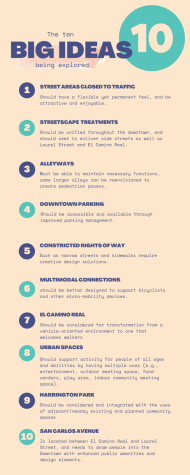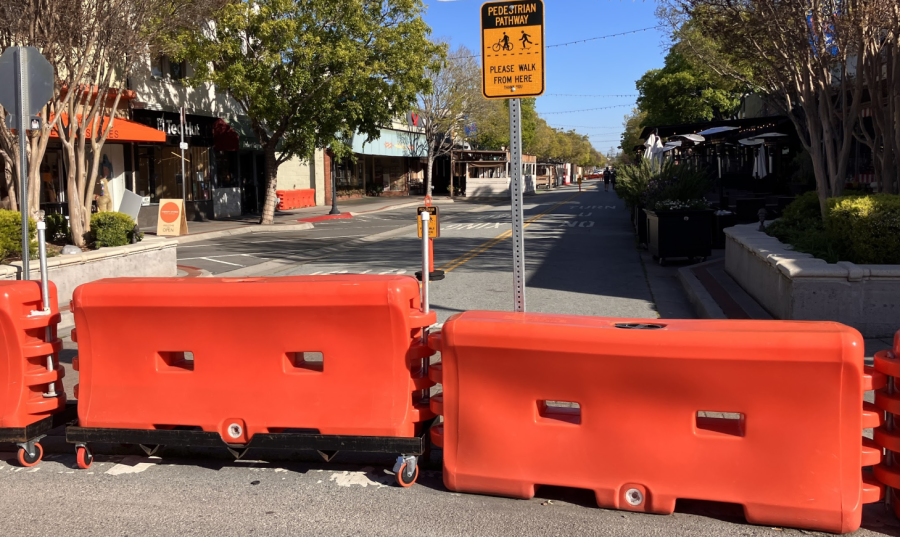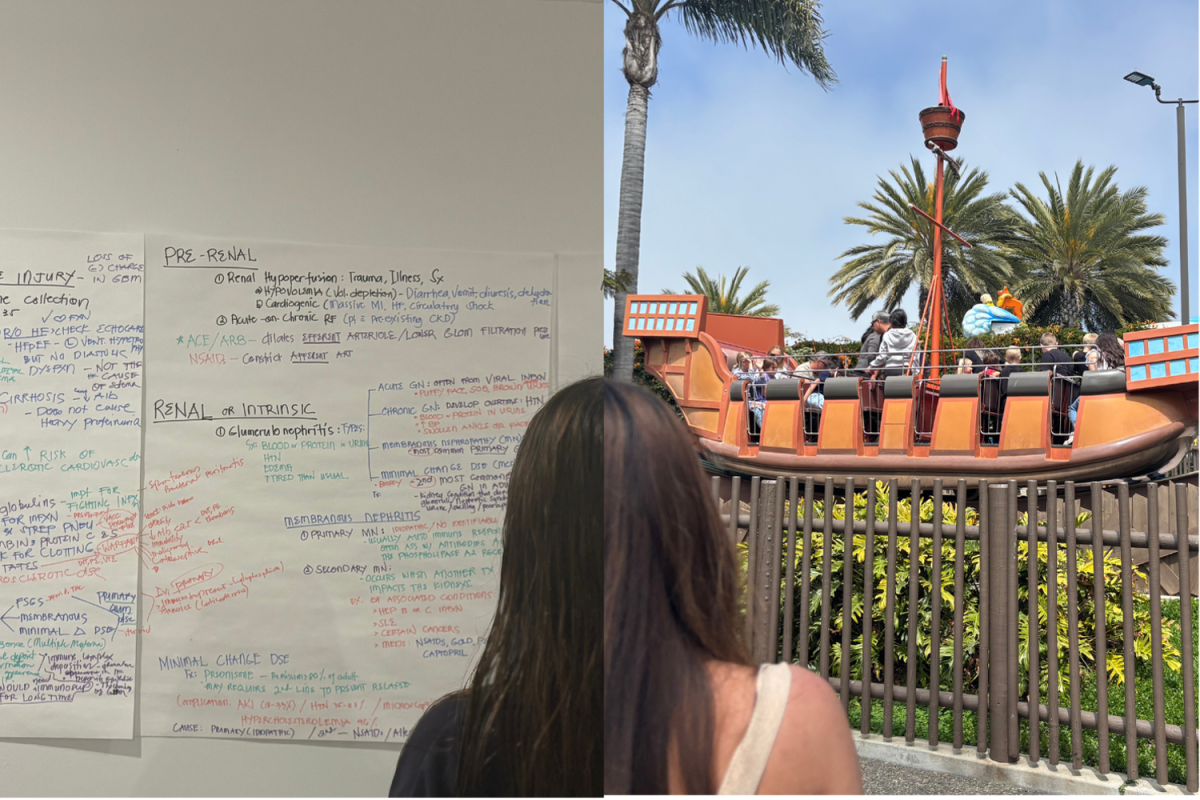Three years after the COVID-19 pandemic forced San Carlos’ downtown to close, the city has decided to create and implement long-term plans that aim to transform the street.
When the first COVID-19 lockdowns began, the 700 block of Laurel Street, where the popular San Carlos downtown is located, was closed to cars in order to create a walkable area. Many residents of San Carlos and nearby towns liked the change.
“I feel like it gives Laurel a special feeling compared to other areas like it,” said Roxie Erpenbeck, a Carlmont sophomore and ten-year Belmont resident.
According to Pranita Venkatesh, an elected member of the San Carlos City Council, the pandemic evolved into what the council considers a great case study of how walkability brings the community together in new and shared spaces.

“Pedestrianizing a portion of Laurel Street has been immensely popular with our community, and I have been a strong advocate for creating a long-term plan for our downtown. I am looking forward to considering pedestrianized spaces while also being very intentional and mindful about access for those with limited mobility. I think there is tremendous untapped potential in the alleyways behind businesses to increase accessibility, parking, deliveries, and pedestrian and bike access,” said Sara McDowell, another Council member.
According to McDowell, the City Council is considering a wide range of topics, such as outdoor dining and public places like parks and plazas, as well as mobility and traffic circulation.
“The City launched a Downtown Specific Plan process that will build upon what is treasured about downtown San Carlos as well as assess improvements that can be made,” McDowell said.
To undertake this task, the Council created a Downtown Advisory Committee (DTAC) chosen from over 100 applicants. Made up of 19 community members, their diverse backgrounds, interests, professional experience, and ages exemplify the motto of the project: “A good plan involves everyone!”
As the motto suggests, community involvement is considered crucial to this project. According to Vice Mayor John Dugan, San Carlos provides many opportunities for community engagement through online surveys as well as in-person engagements such as open workshops.
“We also provide recordings of past meetings on the project website for folks to review and stay up to date. We encourage participation not just at the project workshops, but also when the project is presented to the Planning and Transportation Commission and the City Council during more formal meetings. For example, two study sessions will be held soon – one with the Planning and Transportation Commission on April 17 and one with the City Council the following week on April 24. Anyone can attend these meetings with the Planning Commission and City Council in person or on Zoom,” Dugan said.
In addition to residents, the project also strives to work with property owners, business owners, the Chamber of Commerce, and other members of the community in order to ensure that the new downtown meets the needs of everyone involved in the community. It is especially important to contemplate the needs of local businesses — many San Carlos businesses are small or family-owned.
“It’s our goal to have a healthy, diverse, and robust mix of business types to serve the community at large. We need to look at how to protect thriving businesses, and how best to incorporate new uses that will serve San Carlos and then integrate urban design interventions. This must combine with accessibility for all types of travel – including walking, biking, and driving to ensure equity in accessibility to the full range of business types downtown. We also need to heavily focus on parking and parking strategies to ensure customers can find places to park in proximity to businesses they want to visit,” Venkatesh said.
Short-term goals include quick fixes such as replacing the orange barriers with more attractive planters, but the longer-term plan is likely to take some time. According to Dugan, after adoption in March 2024, this plan will be implemented in phases over the next 10 years. Until then, locals can enjoy the outdoor dining, walking space, and community that 2020 created.
































